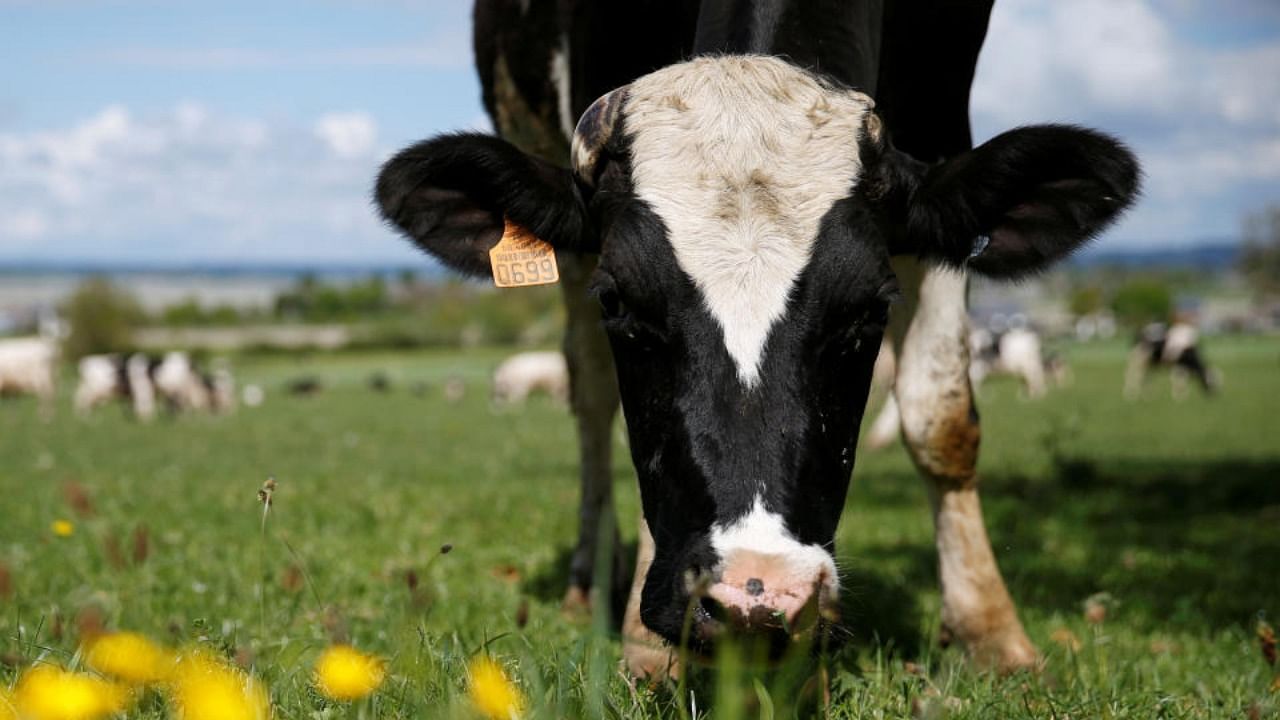
"Cow dung is priceless and it is a wealth. Cow dung is radio protective. Our ancestors have written this somewhere and some experiments are going on.”
“Through Cow Science, we can find ways to save future life on earth in today's climate change disasters and Covid-19-like pandemics.”
-- These are some of the comments made by Vallabhbhai Kathiria, chairperson of the Rashtriya Kamdhenu Aayog in a letter to a group of scientists who questioned Kathiria on his claim of cow dung chips protecting from radiation.
Read | Over 600 scientists seek evidence over claim that cow dung chip can reduce cell phone radiation
The letter, which the scientists received on Sunday carries several other such comments, which the scientists described as “comic literature.”
Sample this: “Today, when we see serials like Ramayan, Mahabharat, Krishna, Chanakya, Upanishad, Ganga we find unmatchable technologies used in the social life which is still beyond our reach.”
Or this - “Like cow milk, cow ghee, cow curd, cow urine and cow dung, all these five elements (Panchgavya) are beneficial for mankind and all living creatures as a whole. Like other scientific innovations, they are blessings to mankind and possess too many useful properties and scientific qualities.”
Kathiria – an onco-surgeon by training and a junior minister in Atal Bihari Vajpayee government is heading the organisation, set up by the Narendra Modi government in 2019 to promote ‘cattle conservation and development’. It comes under the Department of Animal Husbandry and Dairying.
The Gujarat BJP leader was responding to a group of scientists who questioned his fantastic claim of “cow dung chip reducing radiation when kept on the cellular phone” and “cow dung cake in homes reduces ‘radiation”.
While making such claims at a press conference in October, Kathiria claimed his statements were scientifically proven. This prompted a group of scientists to write to Kathiria seeking proof.
Also Read | Cow dung chip reduces radiation from phone: Rashtriya Kamdhenu Aayog chief
On Sunday four of the letter-writers – scientists at Tata Institute of Fundamental Research, IIT Bombay, NIMHANS Bangalore and Indian Institute of Science, Education and Research, Kolkata - received the response from Kathiria along with a testing report in support of his claim. The testing report is signed by Mihir Joshi, professor and Head of the Department, Physics in Saurashtra University, Rajkot, Gujarat.
What Joshi did was to place objects made of cow dung of various thickness in front of a radio-active source and measure the radiation (counting the beta particles) in a Geiger Muller counter. Placing the object reduces the count by around 60%, the test report concluded.
“This experiment is a classic example of what happens if you decide the conclusions first and start designing a ‘study’ to reach that predetermined conclusion,” Aniket Sule, an Associate Professor at Homi Bhabha Centre for Science Education, at TIFR and one of the recipients of the letter told DH.
“What would happen if we make partitions of the same size and shape but use donkey dung or camel dung instead of cow dung? What would happen if we use wet soil instead? What happens if we use wood or plastic? Without these comparisons, the data only points to introducing some solid partition in the path that reduces the count in the GM counter, which is hardly a surprise.”
There are several other fundamental scientific flaws in the so-called testing report. For instance, the GM counter is not useful in measuring very low energy photons such as radio waves, which are used in mobile communication. Thus, it is unclear how this experiment validates the original claim by RKA that cow dung chips reduce ‘radiation’ in mobile phones.
“Politically motivated RKA is pushing such pseudoscience,” said Sule.
